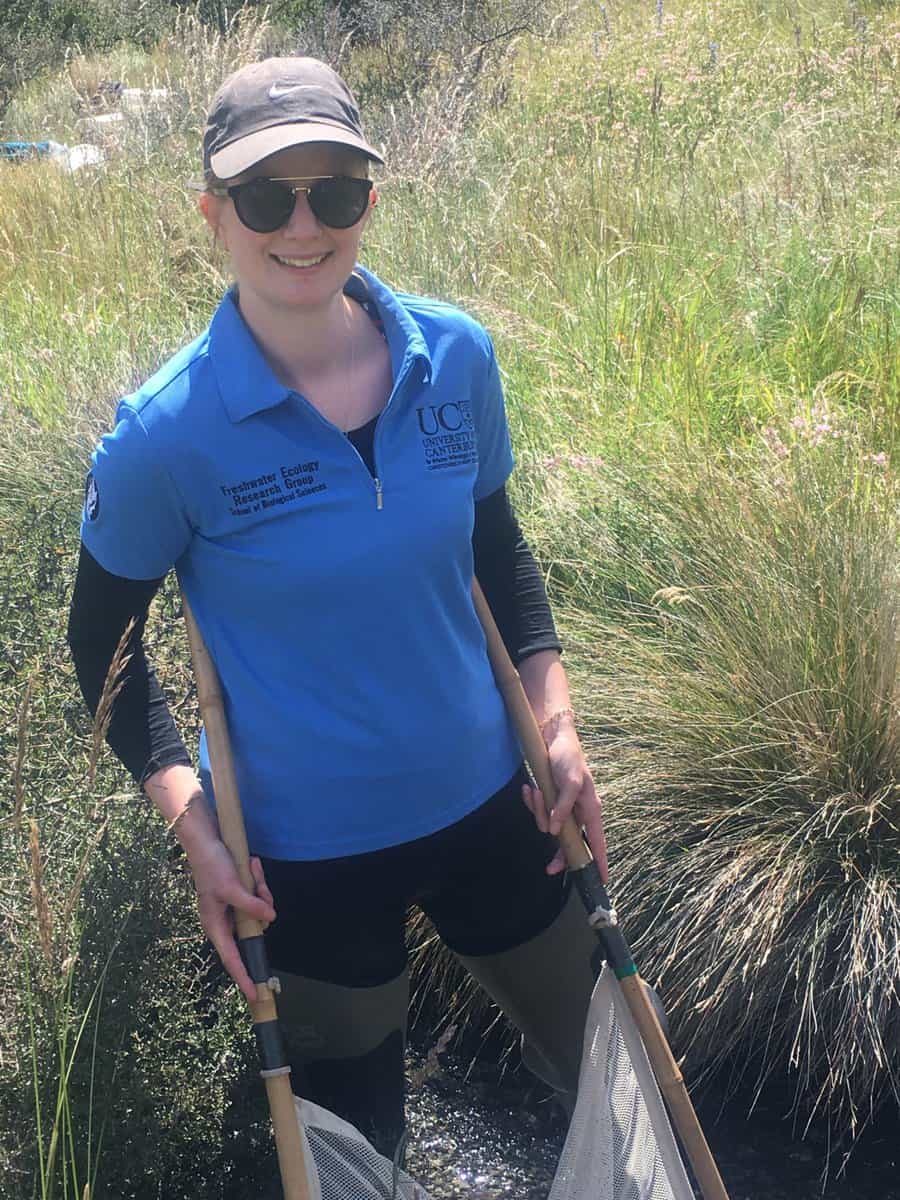While stream restoration projects are generally successful in creating an improved physical environment, the subsequent recovery of biodiversity in such streams is still lacking.
When a stream becomes degraded, only those species that are tolerant enough to survive such conditions remain present, in particular the small mud snail Potamopyrgus antipodarum. Following the restoration of abiotic stream components these species continue to persist in high densities, potentially preventing the re-colonisation of species such as mayflies, stoneflies, and caddisflies.
“Biotic interactions may be inhibiting the colonization of more desired invertebrates” Amy says. “We think snails, worms and fly larvae are preventing colonization of EPT (Ephemeroptera, Plecoptera and Trichoptera) taxa.”
“Crayfish eat snails and other invertebrates, and so the idea is that crayfish might be able to disrupt these degraded communities and facilitate the colonization of EPT.”
Amy has conducted an ex-situ mesocosm experiment, setting up artificial stream environments containing Potamopyrgus snails and freshwater crayfish, along with mayflies, stoneflies and caddisflies.
“The invertebrates inside each artificial stream were able to drift out, and I caught everything that left.” This enabled Amy to measure the amount of each species leaving the mesocosm and determine the effects of crayfish on different invertebrate taxa.


The results of Amy’s research are showing that the presence of freshwater crayfish does make snails leave the mesocosm. This may be due to the snails receiving a chemical cue, encouraging them to leave to avoid predation, or due to being physically displaced from the substrate by the activity of the crayfish.
At the end of the study, there were significantly less snails in the communities that contained crayfish than in those that did not. Snail communities that contained crayfish also had much more successful colonization of EPT taxa than snail communities where crayfish were absent.
These results have potential implications for how we can improve biological recovery in restored streams. “Around Canterbury, crayfish are absent from most streams that they used to be present in” says Amy. As a result, invertebrates like snails have lost their natural predators, allowing them to proliferate. “The addition of a predator may be able to control them a bit better.”
Amy has always had an interest in animal behaviour, and living in Canterbury where freshwater quality is a pressing issue has driven her to be involved in working towards the restoration and conservation of freshwater ecosystems.
